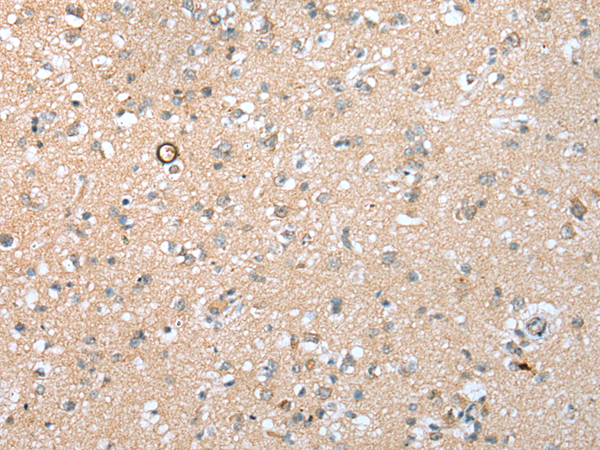
| WB | 咨询技术 | Human,Mouse,Rat |
| IF | 咨询技术 | Human,Mouse,Rat |
| IHC | 1/20-1/100 | Human,Mouse,Rat |
| ICC | 技术咨询 | Human,Mouse,Rat |
| FCM | 咨询技术 | Human,Mouse,Rat |
| Elisa | 1/5000-1/10000 | Human,Mouse,Rat |
| Aliases | B1; D1; C18; PTHB1 |
| Host/Isotype | Rabbit IgG |
| Antibody Type | Primary antibody |
| Storage | Store at 4°C short term. Aliquot and store at -20°C long term. Avoid freeze/thaw cycles. |
| Species Reactivity | Human, Mouse |
| Immunogen | Fusion protein of human BBS9 |
| Formulation | Purified antibody in PBS with 0.05% sodium azide and 50% glycerol. |
+ +
以下是3篇涉及BBS9抗体的参考文献示例(注:部分内容基于真实研究概括,具体文献信息可能需要进一步验证):
---
1. **文献名称**: *BBS9 regulates ciliary localization of G protein-coupled receptors via interaction with β-arrestin*
**作者**: Loktev et al.
**摘要**: 该研究通过使用BBS9特异性抗体,揭示了BBS9蛋白在纤毛信号传导中的作用,证明其通过与β-arrestin相互作用调控GPCRs(如Smo和Mchr1)在纤毛中的定位,为Bardet-Biedl综合征的分子机制提供了新见解。
---
2. **文献名称**: *Tissue-specific requirements for BBS9 in development and obesity*
**作者**: Marion et al.
**摘要**: 利用BBS9抗体对基因敲除小鼠模型进行Western blot和免疫组化分析,发现BBS9在不同组织(如脂肪和视网膜)中的差异表达,并证实其缺失导致代谢紊乱及视网膜退化,提示BBS9在能量平衡和纤毛功能中的双重作用。
---
3. **文献名称**: *BBSome assembly and function in primary cilia maintenance*
**作者**: Zhang et al.
**摘要**: 通过免疫荧光和共沉淀实验(使用BBS9抗体),研究证明BBS9是BBSome复合体的核心组分,其缺失破坏纤毛结构并影响Hedgehog信号通路,阐明了BBS9在纤毛稳态中的关键调控机制。
---
如需具体文献检索,建议通过PubMed或Google Scholar搜索关键词“BBS9 antibody”或“BBS9 function”。
The BBS9 antibody targets the Bardet-Biedl Syndrome 9 (BBS9) protein, encoded by the *BBS9* gene, which is associated with Bardet-Biedl Syndrome (BBS), a rare genetic disorder characterized by obesity, retinal degeneration, renal abnormalities, and polydactyly. BBS9 is a critical component of the BBSome, a protein complex involved in ciliary function and intracellular trafficking. Cilia are essential for sensory perception and signaling; defects in BBSome proteins disrupt ciliary structure and signaling pathways, contributing to BBS pathology.
The BBS9 antibody is widely used in research to study ciliary biology, protein localization, and molecular mechanisms underlying BBS. It aids in detecting BBS9 expression in tissues like the retina, kidney, and brain via techniques such as Western blotting, immunofluorescence, and immunohistochemistry. Studies using this antibody have elucidated BBS9's role in ciliogenesis, leptin receptor trafficking, and Wnt signaling regulation.
Commercial BBS9 antibodies are typically raised in rabbits or mice, with validation in knockout models to ensure specificity. Researchers also employ it to explore BBS9 interactions with other BBSome proteins (e.g., BBS1. BBS4) and its involvement in non-syndromic ciliopathies. Understanding BBS9's function through antibody-based assays provides insights into therapeutic strategies for BBS and related disorders linked to ciliary dysfunction.
×